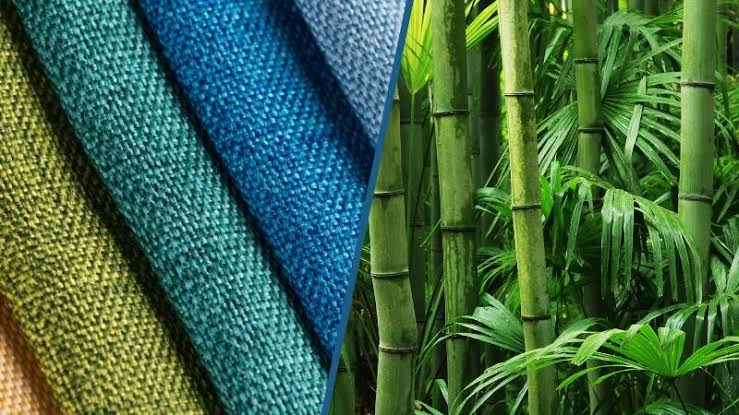
Bamboo fabric: Sustainable softness explained
Share
In the ever-growing movement toward eco-friendly fashion, bamboo fabric has emerged as one of the most talked-about sustainable textiles. Loved for its buttery-soft feel and praised for its environmental benefits, bamboo fabric offers a unique combination of luxury and responsibility.
But what makes bamboo textiles so special, and is bamboo fabric really as sustainable as it sounds? Let’s explore the benefits, uses, and sustainability of this versatile eco-friendly fabric.
What Is Bamboo Fabric?
Bamboo fabric is derived from the fibers of the bamboo plant, one of the fastest-growing plants on Earth. Bamboo can thrive without pesticides, fertilizers, or large amounts of water, making it a highly renewable resource.
Once harvested, the bamboo plant is processed to extract cellulose fibers, which are spun into yarn and woven into fabric. The result is a material that is soft, breathable, and versatile for clothing, bedding, and more.
Bamboo fabric generally falls into two categories:
- Bamboo Linen (Mechanical Process): Made by mechanically crushing the bamboo and extracting fibers, similar to flax. It’s environmentally friendly but labor-intensive and less common.
- Bamboo Viscose/Rayon (Chemical Process): The more widespread method, dissolving bamboo cellulose with chemicals before spinning it into fibers. This produces ultra-soft bamboo fabric, but requires careful management to remain sustainable.
The Softness Factor
Bamboo fabric is often compared to silk and cashmere due to its smooth and round fibers. This structure prevents skin irritation, making it perfect for:
- Sensitive skin: Ideal for baby clothing and underwear.
- Activewear: Moisture-wicking and breathable for sports and exercise.
- Luxury apparel: Soft enough for t-shirts, dresses, and loungewear.
Key qualities contributing to its softness include:
- Moisture-wicking: Keeps skin dry and comfortable.
- Breathable: Excellent airflow prevents overheating.
- Hypoallergenic: Less likely to cause allergic reactions.
Why Bamboo Fabric Is Considered Sustainable
Beyond comfort, bamboo is valued for its eco-friendly properties:
- Fast Growth: Bamboo can grow up to 1 meter per day, making it a highly renewable crop.
- Low Resource Requirements: Needs minimal water and no chemical fertilizers.
- Carbon Sequestration: Absorbs more CO₂ and releases more oxygen than many trees.
- Soil Protection: Its extensive root system prevents soil erosion and improves soil health.
When responsibly produced, bamboo fabric is a low-impact alternative to traditional textiles like cotton or polyester, making it a cornerstone of sustainable fashion.
The Sustainability Debate
While bamboo as a plant is naturally sustainable, the production process can sometimes be less eco-friendly. Bamboo viscose production often uses strong chemicals like sodium hydroxide and carbon disulfide, which, if mishandled, can harm workers and the environment.
To ensure you’re buying truly sustainable bamboo fabrics:
- Look for certifications like OEKO-TEX, GOTS, or FSC.
- Prefer fabrics made using closed-loop production processes, which recycle chemicals and water.
- Choose brands committed to ethical and eco-conscious manufacturing.
Everyday Uses of Bamboo Fabric
The versatility of bamboo textiles makes them ideal for a wide range of products:
- Clothing: T-shirts, dresses, activewear, underwear, and loungewear.
- Home Textiles: Bamboo sheets, towels, blankets, and pillowcases.
- Baby Products: Swaddles, rompers, bibs, and baby blankets.
Its combination of softness, breathability, and durability makes bamboo a practical and luxurious option for everyday life.
Caring for Bamboo Fabric
Bamboo garments are durable and easy to maintain with proper care:
- Washing: Machine wash in cold or lukewarm water using mild detergent. Avoid bleach.
- Drying: Air-dry or tumble dry on low heat; bamboo dries quickly due to its breathable fibers.
- Ironing: Medium heat works best. Bamboo resists wrinkles naturally, but ironing can give a crisp finish if needed.
Proper care ensures your bamboo clothing and bedding last longer while maintaining softness and vibrant colors.
Final Thoughts
Bamboo fabric represents the perfect balance between comfort, style, and sustainability. Its soft texture, durability, and low environmental impact make it a favorite for eco-conscious consumers and forward-thinking fashion brands.
When responsibly sourced and certified, bamboo clothing and home textiles support sustainable fashion practices, reduce environmental impact, and promote a healthier planet.
✨ In short: Bamboo fabric isn’t just soft and breathable — it’s a step toward a sustainable wardrobe and eco-friendly living.
